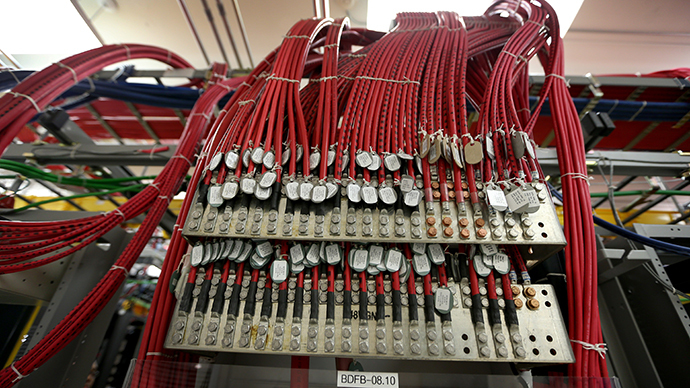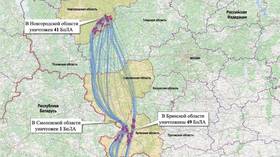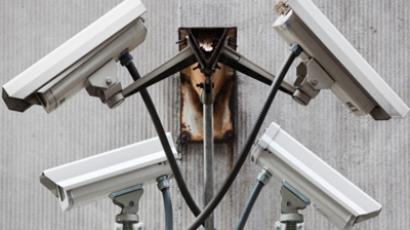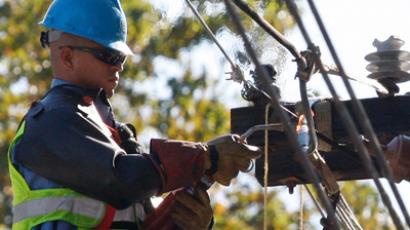Comcast sued for creating public hotspots using private wireless routers

Comcast customers filed a class-action lawsuit against the company in federal court, claiming that its business practices result in higher electricity costs, slower internet connections and increased security vulnerabilities for customers.
Through its subsidiary Xfinity Internet Service, Comcast began building a nationwide system of wireless hotspots in June 2013, using the wireless routers the company leases to its customers to create their home Wi-Fi networks. The company’s goal is to compete with wireless providers like Verizon and AT&T without building infrastructure nationwide, according to McAfee, a computer security company. On top of that, Comcast nets $300 million in additional revenue per quarter from monthly hardware rental fees, DSLReports editor Karl Bode notes.
But the two main plaintiffs in the case ‒ Toyer Grear and her daughter, Joycelyn Harris, on behalf of all Xfinity customers ‒ accuse Comcast of using their leased router without their permission, leading to a higher financial burden, lower productivity and increased security vulnerabilities. They filed suit with the US District Court in San Francisco on Thursday.
Comcast’s practices, they claim, place “the costs of [the Xfinity] national Wi-Fi network onto its customers” and violates several federal and California laws, including the Computer Fraud and Abuse Act (18 USC § 1030), the state’s Comprehensive Computer Data Access and Fraud Act and California’s Unfair Competition Law.
Comcast’s new leased routers are equipped to broadcast both a home network Wi-Fi signal and an additional, public Wi-Fi hotspot. All a person needs to log in to these internet connections is a Comcast username and password, ArsTechnica reported. The company then began “selectively activating” these public networks in various markets across the country ‒ starting in June with 150,000 Houston-area homes ‒ “with the goal of enabling 8 million Xfinity Wi-Fi Hotspots by the end of 2014,” the court documents read.
The suit claims that Comcast does not obtain its customers’ authorization to use their equipment and internet service for public, non-home-based use. “Indeed, without obtaining its customers’ authorization for this additional use of their equipment and resources, over which the customer has no control, Comcast has externalized the costs of its national Wi-Fi network onto its customers,” the court filing says. “The new wireless routers the Company issues consume vastly more electricity in order to broadcast the second, public Xfinity Wi-Fi Hotspot, which cost is born [sic] by the residential customer.”
According to Speedify’s Raj Haldar, who was cited as a commenter in the suit, customers can expect to pay an additional $20-30 in electricity costs annually due to the new routers… even if no one uses the hotspot. When the routers are in use ‒ either on the private, home network or a complete stranger sitting outside the customer’s residence ‒ then the electricity costs climb an additional 30 to 40 percent.
Higher electricity costs aren’t the only way customers are negatively affected by Comcast’s activation of the public network.
“Additionally, this unauthorized broadcasting of a secondary, public Wi-Fi network from the customer’s wireless router degrades the performance of the customer’s home Wi-Fi network,” the suit continues.
Another comment quoted in the filing explained the effects of multiple users. “There’s limited bandwidth to your device and, on the larger scale, your neighborhood. With enough guests in a concentrated area, it will absolutely affect your connectivity… it may even destroy it,” Josh Carr wrote on the Fix Denver blog.
The plaintiffs also claim that the new routers create increased security vulnerabilities for the entire network, including the private, home side.
“The unauthorized broadcasting of a secondary, public Wi-Fi network from the customer’s wireless router subjects the customer to potential security risks, in the form of enabling a stranger who wishes to access the Internet through the customer’s household router, with the customer having no option to authorize or otherwise control such use,” the suit says, claiming that any activity on the public Xfinity WiFi Hotspot will appear as though it originated from the Comcast customer’s IP address.
The problem, the court documents note, is that Comcast’s contract with its consumers is so vague that it is unclear as to whether the company even addresses this practice at all, much less adequately enough to be said to have obtained its customers’ authorization of this practice. And the activation of the public Wi-Fi hotspot ‒ which are turned on by default ‒ does not require the router lessees to opt in to the equipment’s use.
The company denies the accusations made in the lawsuit. “We disagree with the allegations in this lawsuit and believe our Xfinity WiFi home hotspot program provides real benefits to our customers,” Comcast said in a brief statement Tuesday. “We provide information to our customers about the service and how they can easily turn off the public Wi-Fi hotspot if they wish.”
Comcast says that customers can opt out of allowing their routers to be used by calling Xfinity customer service or visiting its website. Tech site Tom’s Guide published more detailed instructions on how to disable the hotspot in July.
But some customers complain that opting out is not as easy as Comcast makes it sound.
“My ability to turn Wi-Fi off via the 'Users & Preferences' page (does) not exist," one customer wrote on the DSLReports forums. “Calling the 800 number and going to internet support gave me someone who only suggested trying to disable & re-enable bridge mode (which didn't eliminate 'xfinitywifi'). He then suggested I (get this!) read up on the Comcast customer forums on their website as ‘there are constantly updates to the firmware in our modems and this is probably just an update that has an issue at the moment.’”
The suit asks for unspecified damages and an injunction preventing Comcast from using home wireless routers for its hotspot network. On Monday, the court issued a summons ordering the company to answer the complaint within 21 days.
Of course, if customers purchase their own modems and wireless routers, they avoid the problems outlined in the lawsuit and save on the $8 monthly equipment rental fee.














